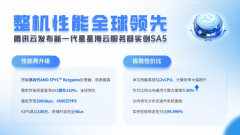Android Include布局和Fragment滑动切换屏幕
发布时间:2014-11-10 00:00 来源:Eastmount的专栏
前面的文章已经讲述了”随手拍”项目图像处理的技术部分,该篇文章主要是主界面的布局及屏幕滑动切换,并结合鸿洋大神的视频和郭神的第一行代码(强推两人Android博客),完成了下面的内容:
(1).学习使用Include布局XML
(2).通过添加适配器加载fragment
(3).实现滑动触摸切换屏幕viewPager
(4).改变图标及背景,并响应fragment中控件及传递参数
一. 运行效果
如下图所示,滑动屏幕可以切换布局”空间”、”相册”、”关注”.同时会有图标颜色变蓝,背景颜色加深的效果.

同时添加了按钮事件,在fragment1中点击按钮显示内容,在fragment3中点击按钮获取第二个布局内容并显示.

二. 项目工程结构
三. Include布局XML文件
首先添加头部布局top_layout.xml,采用相对布局,右边两图标:
< xml version="1.0" encoding="utf-8" >
<RelativeLayout xmlns:android="http://schemas.android.com/apk/res/android"
android:layout_width="match_parent"
android:layout_height="50dp"
android:paddingLeft="12dp"
android:paddingRight="12dp"
android:background="@drawable/image_toolbar_bg" >
<LinearLayout
android:layout_width="wrap_content"
android:layout_height="wrap_content"
android:layout_centerVertical="true"
android:layout_gravity="center"
android:orientation="horizontal" >
<ImageView
android:layout_width="30dp"
android:layout_height="30dp"
android:src="@drawable/icon_suishoupai" />
<TextView
android:layout_width="wrap_content"
android:layout_height="wrap_content"
android:layout_marginLeft="12dp"
android:text="随手拍"
android:textSize="15sp"
android:layout_gravity="center"
android:textColor="#ffffff" />
</LinearLayout>
<LinearLayout
android:layout_width="wrap_content"
android:layout_height="wrap_content"
android:layout_centerVertical="true"
android:layout_gravity="center"
android:layout_alignParentRight="true"
android:orientation="horizontal" >
<ImageView
android:layout_width="30dp"
android:layout_height="30dp"
android:src="@drawable/image_top_watch" />
<ImageView
android:layout_width="30dp"
android:layout_height="30dp"
android:src="@drawable/image_top_add" />
</LinearLayout>
</RelativeLayout>
然后添加底部布局bottom_layout.xml,由3个LinearLayout水平布局组成,其中每个LinearLayout有ImageView和TextView组成:
< xml version="1.0" encoding="utf-8" >
<LinearLayout xmlns:android="http://schemas.android.com/apk/res/android"
android:layout_width="match_parent"
android:layout_height="40dp"
android:background="@drawable/image_toolbar_bg"
android:orientation="horizontal" >
<LinearLayout
android:id="@+id/bottomLayout1"
android:layout_width="wrap_content"
android:layout_height="wrap_content"
android:layout_weight="1"
android:gravity="center"
android:background="@drawable/image_toolbar_bg_sel"
android:orientation="vertical" >
<ImageView
android:id="@+id/image1"
android:layout_width="wrap_content"
android:layout_height="wrap_content"
android:padding="1dp"
android:src="@drawable/image_bottom_effect" />
<TextView
android:layout_width="wrap_content"
android:layout_height="15dp"
android:text="空间"
android:textColor="#ffffff"
android:textSize="10dp" />
</LinearLayout>
<LinearLayout
android:id="@+id/bottomLayout2"
android:layout_width="wrap_content"
android:layout_height="wrap_content"
android:layout_weight="1"
android:gravity="center"
android:orientation="vertical" >
<ImageView
android:id="@+id/image2"
android:layout_width="wrap_content"
android:layout_height="wrap_content"
android:padding="1dp"
android:src="@drawable/image_bottom_frame_no" />
<TextView
android:layout_width="wrap_content"
android:layout_height="15dp"
android:text="相册"
android:textColor="#ffffff"
android:textSize="10dp" />
</LinearLayout>
<LinearLayout
android:id="@+id/bottomLayout3"
android:layout_width="wrap_content"
android:layout_height="wrap_content"
android:layout_weight="1"
android:gravity="center"
android:orientation="vertical" >
<ImageView
android:id="@+id/image3"
android:layout_width="wrap_content"
android:layout_height="wrap_content"
android:padding="1dp"
android:src="@drawable/image_bottom_person_no" />
<TextView
android:layout_width="wrap_content"
android:layout_height="15dp"
android:text="关注"
android:textColor="#ffffff"
android:textSize="10dp" />
</LinearLayout>
</LinearLayout>
最后在activity_main.xml中调用Include布局,ViewPager用于加载不同的fragment,并实现触屏切换在该控件上:
<LinearLayout xmlns:android="http://schemas.android.com/apk/res/android"
xmlns:tools="http://schemas.android.com/tools"
android:id="@+id/container"
android:layout_width="match_parent"
android:layout_height="match_parent"
android:orientation="vertical">
<include layout="@layout/top_layout"/>
<android.support.v4.view.ViewPager
android:id="@+id/viewpager1"
android:layout_width="match_parent"
android:layout_height="0dp"
android:background="#ccffff"
android:layout_weight="1" />
<include layout="@layout/bottom_layout"/>
</LinearLayout>
在MainActivity.java中onCreate函数设置无标题requestWindowFeature(Window.FEATURE_NO_TITLE),在xml文件中可设置Frame预览效果无标题,显示布局如下图所示:

四. 实现触屏切换fragment
首先设置Fragment的布局XML文件,fragment_layout1.xml如下,其他类似:< xml version="1.0" encoding="utf-8" >
<LinearLayout xmlns:android="http://schemas.android.com/apk/res/android"
android:layout_width="match_parent"
android:layout_height="match_parent"
android:orientation="vertical" >
<TextView
android:id="@+id/textView1"
android:layout_width="fill_parent"
android:layout_height="wrap_content"
android:textSize="25sp"
android:gravity="center"
android:text="The First Fragment" />
<Button
android:id="@+id/button1"
android:layout_width="fill_parent"
android:layout_height="wrap_content"
android:text="Button1" />
</LinearLayout>
然后添加FragmentFirst.java、FragmentSecond.java和FragmentThird,其中FragmentSecond.java如下,其他类似:
package com.example.layouttest;
import android.os.Bundle;
import android.support.v4.app.Fragment;
import android.view.LayoutInflater;
import android.view.View;
import android.view.ViewGroup;
public class FragmentSecond extends Fragment {
@Override
public View onCreateView(LayoutInflater inflater, ViewGroup container,Bundle savedInstanceState) {
return inflater.inflate(R.layout.fragment_layout2, container, false);
}
}
PS:由于刚学习Android一个月,所以文章很基础,在新建类中可以点击”浏览”自定义添加继承超类或点击”添加”增加接口,此处继承Fragment.注意”import android.support.v4.app.Fragment;”所有的需要一致.
然后设置MainActivity.java,代码如下:
package com.example.layouttest;
import java.util.ArrayList;
import java.util.List;
import android.os.Bundle;
import android.support.v4.app.Fragment;
import android.support.v4.app.FragmentActivity;
import android.support.v4.app.FragmentPagerAdapter;
import android.support.v4.view.ViewPager;
import android.view.Window;
public class MainActivity extends FragmentActivity {
//注意:导入时均为support.v4.app/view 保持一致
private ViewPager viewPager1;
private FragmentPagerAdapter fpAdapter;
private List<Fragment> listData;
@Override
protected void onCreate(Bundle savedInstanceState) {
super.onCreate(savedInstanceState);
//注意:设置无标题需要在setContentView前调用 否则会崩溃
requestWindowFeature(Window.FEATURE_NO_TITLE);
setContentView(R.layout.activity_main);
//初始化设置ViewPager
setViewPager();
}
private void setViewPager() {
//初始化数据
viewPager1 = (ViewPager) findViewById(R.id.viewpager1);
listData = new ArrayList<Fragment>();
FragmentFirst fragmentFirst = new FragmentFirst();
FragmentSecond fragmentSecond = new FragmentSecond();
FragmentThird fragmentThird = new FragmentThird();
//三个布局加入列表
listData.add(fragmentFirst);
listData.add(fragmentSecond);
listData.add(fragmentThird);
//ViewPager相当于一组件容器 实现页面切换
fpAdapter =new FragmentPagerAdapter(getSupportFragmentManager())
{
@Override
public int getCount()
{
return listData.size();
}
@Override
public Fragment getItem(int arg0)
{
return listData.get(arg0);
}
};
//设置适配器
viewPager1.setAdapter(fpAdapter);
}
}
此时即可实现触屏切换效果,但同时需要注意:
(1).需要把MainActivity继承从Activity改为FragmentActivity.
(2).可能会遇到错误”类型对于参数(FragmentFirst)不适用”,你需要把导入修改”import android.support.v4.app.Fragment;”同时注意support.v4.app/view 保持一致.
五. 实现滑屏变换图标
此时设置底部滑动切换的图标时需要添加自定义变量:
//底部图标 private ImageView image1; private ImageView image2; private ImageView image3; private LinearLayout layout1; private LinearLayout layout2; private LinearLayout layout3;
然后,在setViewPager()函数中”viewPager1.setAdapter(fpAdapter)”后添加如下代码即可实现,其中switch中0、1、2对应listData中装入的三个布局:
//初始化图标
image1 = (ImageView) findViewById(R.id.image1);
image2 = (ImageView) findViewById(R.id.image2);
image3 = (ImageView) findViewById(R.id.image3);
layout1 = (LinearLayout) findViewById(R.id.bottomLayout1);
layout2 = (LinearLayout) findViewById(R.id.bottomLayout2);
layout3 = (LinearLayout) findViewById(R.id.bottomLayout3);
//滑屏变换图标
viewPager1.setOnPageChangeListener(new OnPageChangeListener() {
@Override
public void onPageSelected(int arg0)
{
switch(arg0)
{
case 0:
//图片切换
image1.setImageDrawable(getResources().getDrawable(R.drawable.image_bottom_effect));
image2.setImageDrawable(getResources().getDrawable(R.drawable.image_bottom_frame_no));
image3.setImageDrawable(getResources().getDrawable(R.drawable.image_bottom_person_no));
//背景加深
layout1.setBackgroundResource(R.drawable.image_toolbar_bg_sel);
layout2.setBackgroundResource(R.drawable.image_toolbar_bg);
layout3.setBackgroundResource(R.drawable.image_toolbar_bg);
break;
case 1:
//图片切换
image1.setImageDrawable(getResources().getDrawable(R.drawable.image_bottom_effect_no));
image2.setImageDrawable(getResources().getDrawable(R.drawable.image_bottom_frame));
image3.setImageDrawable(getResources().getDrawable(R.drawable.image_bottom_person_no));
//背景加深
layout1.setBackgroundResource(R.drawable.image_toolbar_bg);
layout2.setBackgroundResource(R.drawable.image_toolbar_bg_sel);
layout3.setBackgroundResource(R.drawable.image_toolbar_bg);
break;
case 2:
//图片切换
image1.setImageDrawable(getResources().getDrawable(R.drawable.image_bottom_effect_no));
image2.setImageDrawable(getResources().getDrawable(R.drawable.image_bottom_frame_no));
image3.setImageDrawable(getResources().getDrawable(R.drawable.image_bottom_person));
//背景加深
layout1.setBackgroundResource(R.drawable.image_toolbar_bg);
layout2.setBackgroundResource(R.drawable.image_toolbar_bg);
layout3.setBackgroundResource(R.drawable.image_toolbar_bg_sel);
break;
}
}
@Override
public void onPageScrolled(int arg0, float arg1, int arg2)
{
}
@Override
public void onPageScrollStateChanged(int arg0)
{
}
});
六. 调用Fragment中按钮及传递参数
设置FragmentFirst.java文件,通过onActivityCreated函数实现点击按钮事件:
public class FragmentFirst extends Fragment {
@Override
public View onCreateView(LayoutInflater inflater, ViewGroup container,Bundle savedInstanceState) {
return inflater.inflate(R.layout.fragment_layout1, container, false);
}
@Override
public void onActivityCreated(Bundle savedInstanceState) {
super.onActivityCreated(savedInstanceState);
//添加Fragment1的响应事件
Button button1 = (Button) getActivity().findViewById(R.id.button1);
button1.setOnClickListener(new OnClickListener() {
@Override
public void onClick(View v) {
TextView textView1 = (TextView) getActivity().findViewById(R.id.textView1);
textView1.setText("在fragment1中点击按钮");
}
});
}
}
FragmentThird.java实现点击Fragment3中按钮获取Fragment2中数据:
public class FragmentThird extends Fragment {
@Override
public View onCreateView(LayoutInflater inflater, ViewGroup container,Bundle savedInstanceState) {
return inflater.inflate(R.layout.fragment_layout3, container, false);
}
@Override
public void onActivityCreated(Bundle savedInstanceState) {
super.onActivityCreated(savedInstanceState);
//添加Fragment3的响应事件
Button button3 = (Button) getActivity().findViewById(R.id.button3);
button3.setOnClickListener(new OnClickListener() {
@Override
public void onClick(View v) {
TextView textView1 = (TextView) getActivity().findViewById(R.id.textView2);
TextView textView3 = (TextView) getActivity().findViewById(R.id.textView3);
textView3.setText("点击按钮获取fragment2信息:\n"+textView1.getText());
}
});
}
}
PS:是否Fragment的XML文件TextView需要设置不同的id,假如Fragment1与Fragment2设置相同的textView1程序没有响应.








